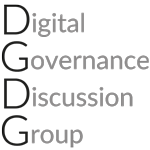By Pari Esfandiari.
The recent Global Digital Compact (GDC) discussions held in September 2024 have reignited the call for a more integrated approach to digital governance, highlighting the urgent need to merge the World Summit on the Information Society (WSIS) Action Lines with the Sustainable Development Goals (SDGs). As we look ahead to the WSIS+20 in 2025, the time is ripe to address this separation and work towards a unified framework that streamlines efforts, maximizes resources, and accelerates progress toward sustainable digital development.
Since their inception, WSIS Action Lines and SDGs have operated in parallel, often duplicating efforts despite their common goal of leveraging digital technologies to advance sustainable development. The two frameworks, though aligned in purpose, remain largely disconnected, resulting in missed opportunities for synergy and coordinated action.
WSIS Action Lines, established during the 2003 and 2005 summits, focus on creating an inclusive, development-oriented information society through 11 priority areas, such as ICT infrastructure, cybersecurity, and capacity building. Meanwhile, the SDGs, adopted in 2015, outline 17 global goals aimed at addressing critical challenges like poverty, inequality, and climate change by 2030.
The disconnect between these two frameworks has led to fragmented efforts and inefficiencies. For instance, WSIS Action Line C7 on e-health aligns closely with SDG 3 (Good Health and Well-being), but these goals are frequently pursued independently rather than through a unified approach. To bridge this gap, several organizations have developed their own frameworks, with the ITU’s WSIS-SDG Matrix being one of the most widely recognized. However, these efforts often lack coherence, leading stakeholders to struggle with aligning WSIS and SDG implementation strategies. This disjointed approach not only complicates coordination but also results in missed opportunities for synergy, collaboration, and more impactful outcomes.
The GDC 2024 discussions and Outcome Document emphasized the need for a more coordinated digital strategy to address global challenges effectively. By aligning WSIS Action Lines with the SDGs, stakeholders can create a unified policy framework that directly connects digital transformation with sustainable development. This merger would enhance policy coherence, streamline efforts, and allow for a more impactful approach to leveraging digital technologies for global good.
The upcoming WSIS+20 Forum, scheduled for May 2025 is a crucial opportunity to spotlight the integration of WSIS Action Lines with the SDGs. This event will bring together global leaders, private sector stakeholders, civil society, and technical communities to review two decades of progress and chart future pathways. The WSIS Beyond 2025 Roadmap already highlights the importance of “strengthening the linkages between the WSIS Action Lines and the SDGs.” It is essential to prioritize the merging of these frameworks, potentially redefining the SDGs as “Sustainable Digital Goals” that target digital-specific outcomes, or as Wolfgang Kleinwächter suggests, “Comprehensive Development Goals.” This pivotal moment could reshape how digital and sustainable development agendas align beyond 2030.
Merging WSIS Action Lines and SDGs would offer many benefits, key among them are:
- A merged framework would eliminate duplication, making it easier for governments, the private sector, and civil society to coordinate efforts, allocate resources effectively, and measure progress using consistent metrics.
- Aligning these frameworks would improve transparency and accountability by establishing clearer connections between digital initiatives and sustainable outcomes, enabling better tracking of progress toward global goals.
- The integration would emphasize the role of digital technologies as key enablers of all 17 SDGs, driving economic growth, innovation, and improved quality of life on a global scale.
- A unified framework would foster cohesive policy development, encouraging countries to integrate digital strategies into their national and regional development plans, ensuring digital inclusion and sustainable development go hand in hand.
The WSIS+20 2025 will serve as a key platform to discuss the future of digital governance and the integration of WSIS Action Lines with the SDGs. This convergence can drive forward the vision articulated in the GDC, aligning digital transformation efforts with sustainable development needs and setting the stage for a new era of coordinated global action.
As stakeholders prepare for WSIS+20 2025, there is a clear mandate to advocate for a comprehensive merger of these frameworks, maximizing the impact of ICTs on sustainable development. By seizing this moment, the global community can ensure that digital transformation and sustainable development are not pursued in isolation but as complementary forces shaping a better future for all.
